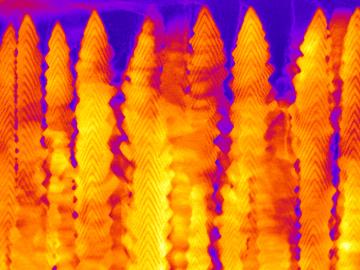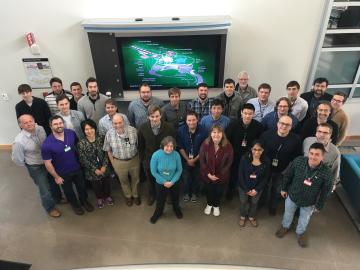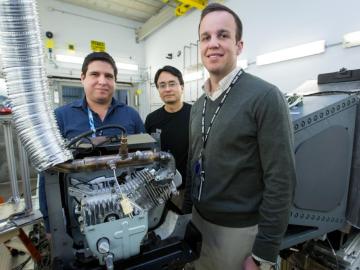
Filter News
Area of Research
- (-) Computer Science (1)
- (-) Isotopes (6)
- (-) Neutron Science (35)
- Advanced Manufacturing (4)
- Biology and Environment (26)
- Computational Biology (1)
- Computational Engineering (1)
- Energy Science (80)
- Fusion and Fission (11)
- Fusion Energy (8)
- Isotope Development and Production (1)
- Materials (91)
- Materials Characterization (1)
- Materials for Computing (14)
- Materials Under Extremes (1)
- National Security (7)
- Nuclear Science and Technology (14)
- Nuclear Systems Modeling, Simulation and Validation (1)
- Quantum information Science (1)
- Supercomputing (27)
- Transportation Systems (2)
News Type
News Topics
- (-) Biomedical (11)
- (-) Coronavirus (5)
- (-) Materials Science (17)
- (-) Physics (8)
- (-) Transportation (4)
- 3-D Printing/Advanced Manufacturing (3)
- Artificial Intelligence (7)
- Big Data (4)
- Bioenergy (4)
- Biology (4)
- Biotechnology (1)
- Buildings (1)
- Chemical Sciences (1)
- Composites (1)
- Computer Science (17)
- Cybersecurity (2)
- Energy Storage (7)
- Environment (6)
- Frontier (1)
- Fusion (1)
- Grid (2)
- High-Performance Computing (2)
- Irradiation (1)
- Isotopes (17)
- Machine Learning (3)
- Materials (11)
- Microscopy (2)
- Nanotechnology (7)
- National Security (2)
- Neutron Science (68)
- Nuclear Energy (3)
- Quantum Science (7)
- Security (1)
- Space Exploration (3)
- Summit (4)
Media Contacts

A team led by the Department of Energy’s Oak Ridge National Laboratory synthesized a tiny structure with high surface area and discovered how its unique architecture drives ions across interfaces to transport energy or information.

An international team of researchers has discovered the hydrogen atoms in a metal hydride material are much more tightly spaced than had been predicted for decades — a feature that could possibly facilitate superconductivity at or near room temperature and pressure.

Scientists have discovered a way to alter heat transport in thermoelectric materials, a finding that may ultimately improve energy efficiency as the materials

An ORNL-led team's observation of certain crystalline ice phases challenges accepted theories about super-cooled water and non-crystalline ice. Their findings, reported in the journal Nature, will also lead to better understanding of ice and its various phases found on other planets, moons and elsewhere in space.

OAK RIDGE, Tenn., March 20, 2019—Direct observations of the structure and catalytic mechanism of a prototypical kinase enzyme—protein kinase A or PKA—will provide researchers and drug developers with significantly enhanced abilities to understand and treat fatal diseases and neurological disorders such as cancer, diabetes, and cystic fibrosis.


A team of scientists has for the first time measured the elusive weak interaction between protons and neutrons in the nucleus of an atom. They had chosen the simplest nucleus consisting of one neutron and one proton for the study.
![2018-P07635 BL-6 user - Univ of Guelph-6004R_sm[2].jpg 2018-P07635 BL-6 user - Univ of Guelph-6004R_sm[2].jpg](/sites/default/files/styles/list_page_thumbnail/public/2018-P07635%20BL-6%20user%20-%20Univ%20of%20Guelph-6004R_sm%5B2%5D.jpg?itok=hUSyvkP0)
A team of scientists, led by University of Guelph professor John Dutcher, are using neutrons at ORNL’s Spallation Neutron Source to unlock the secrets of natural nanoparticles that could be used to improve medicines.

After more than a year of operation at the Department of Energy’s (DOE’s) Oak Ridge National Laboratory (ORNL), the COHERENT experiment, using the world’s smallest neutrino detector, has found a big fingerprint of the elusive, electrically neutral particles that interact only weakly with matter.

Researchers used neutrons to probe a running engine at ORNL’s Spallation Neutron Source


